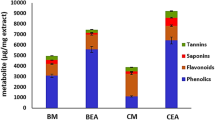Abstract
As part of a study to clarify the origins of biologically active substances in marine sponges, the carotenoids produced by two species of marine bacteria,Flexibacter sp. strain number DK30213 and DK30223, associated with the marine sponge,Reniera japonica, were investigated. Both bacteria were found to produce zeaxanthin [(3R, 3′R)-dihydroxy-β,β-carotene] which is widely distributed in marine organisms. This carotenoid was also detected in the host sponge, suggesting the transport of zeaxanthin from the microorganisms to the host. As zeaxanthin plays the role of a quencher and scavenger for active species of oxygen, it is presumed that the sponge accumulates the bacterial product as a defense substance against the active oxygen species produced under irradiation by strong sunlight. It is thought that the bacteria are symbionts of the host sponge and act by obtaining the solid substrate and medium needed for settlement and growth from the host, and by producing and transmitting the biologically active substance to the host. Zeaxanthin-producing bacteria are also considered to have potential for practical uses by the aquacultural, pharmaceutical and food industries.
Similar content being viewed by others
Literatur
Miki, W., Pure appl. Chem.63 (1991) 141.
Yamaguchi, M., Bull. chem. Soc. Jap.30 (1957) 111.
Yamaguchi, M., Bull. chem. Soc. Jap.30 (1957) 978.
Yamaguchi, M., Bull. chem. Soc. Jap.31 (1958) 51.
Matsuno, T., in: Carotenoids: Chemistry and Biology, p. 59. Eds N. I. Drinsky, M. M. Mathews-Roth and R. F. Taylor. Plenum Press, New York 1990.
Miki, W., Otaki, N., Yokoyama, A., Izumida, H., and Shimidzu, N., Experientia50 (1994) 684.
Tanaka, Y., in: Carotenoids of Aquatic Animals, p. 7. Ed. Japan, Soc. Sci. Fish., Koseisha Koseikaku, Tokyo 1978.
Reichenback, H., in: Bergey's Manual of Systematic Bacteriology, p. 2061. Eds J. T. Staley, M. P. Bryant, N. Ffennig and J. G. Holt. Williams & Wilkins, Baltimore 1984.
Miki, W., Yamaguchi, K., and Konosu, S., Comp. Biochem. Physiol.71B (1982) 7.
Maoka, T., Arai, A., Shimizu, M., and Matsuno, T., Comp. Biochem. Physiol.83B (1986) 121.
Yokoyama, A., Izumida, H., and Miki, W., Biosci. Biotech. Biochem.58 (1994) 1842.
McBeth, J. W., Comp. Biochem. Physiol.41B (1972) 473.
Shimidzu, N., Goto, M., Miki, W., Book of Abstracts of the Tenth International Symposium on Carotenoids. No. CL7-3. Trondheim, Norway 1993.
Miki, W., Otaki, N., Shimidzu, N., and Yokoyama, A., J. mar. Biotechnol.2 (1994) 35.
Mori, T., Muranaka, T., Miki, W., Yamaguchi, K., Konosu, S., and Watanabe, T., Nippon Suisan Gakkaishi.53 (1987) 433.
Author information
Authors and Affiliations
Rights and permissions
About this article
Cite this article
Miki, W., Otaki, N., Yokoyama, A. et al. Possible origin of zeaxanthin in the marine sponge,Reniera japonica. Experientia 52, 93–96 (1996). https://doi.org/10.1007/BF01922424
Received:
Accepted:
Published:
Issue Date:
DOI: https://doi.org/10.1007/BF01922424




